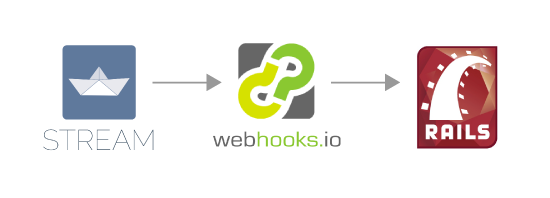Using Webhooks.io and RequestBin for Early Phases of a Rails Application
/Earlier today I wanted to use Getstream's real time webhooks feature. To enable the feature, I had to get in contact with their support team and provide my app id, feed slugs and my callback URL for the webhook. But there was one problem, I didn't have a callback URL since I'm only in the beginning phases of using this feature.
I had the option of giving a temporary callback URL. I decided against this because I didn't want to be dependent on contacting them to make the URL change later. Instead, I decided to do some research to see what my alternatives were. Surely, I'm not the only one who has ran into this problem before.
During my research I discovered webhooks.io and I'm glad I did. Webhooks.io can serve as a reliable and scalable proxy for your webhooks. You can set up buckets in order to route the different webhooks your application might consume. For every bucket, you provide inputs and destinations.
Webhooks.io Bucket Configuration
The following shows how I setup my bucket configuration within webhooks.io. Webhooks allows you to create multiple destinations for a single input, but for this example we will be creating a single destination. The input will be the request from get stream and the destination will be a new RequestBin. We are using RequestBin in this example so that we can inspect the getstream payloads. This is temporary since we have not built a callback feature into our Rails application.
Input - New Callback URL
Instead of configuring getstream with:
https://www.MyRailsApplication.com/callbacks/getstream
Get stream will now call:
https://gateway.webhooks.io/v1/getstream/ReallyLongID
Destination - Where to Route The Request
- Create a new RequestBin at http://requestb.in/
- Within webhooks.io, create a new destination and set the Endpoint URL to your new RequestBin URL
Now, when a request comes into webhooks.io, that request will be sent to your RequestBin. Now we can inspect the HTTP requests that are being sent from getstream prior to development. We also have the added benefit of using the sample request payloads in our integration tests during development.
But remember, RequestBin is only a temporary solution while developing the callback functionality within the Rails application. Once you have built that feature, you can easily create or modify the destination to point to your Rails application.




















